
Flooring made of old-growth wood is beautiful, but sometimes the floor comes with an undesirable history. Termite damage, burn marks, pet stains, and signs of other mistreatment can so disfigure sections of wood that the only alternative is replacement.
Fortunately, ripping out the entire floor isn’t necessary. A bit of skillful patching can heal ancient wounds. There are two main challenges: matching the wood in all of its specifics, and “lacing in” or staggering the repair so that the patch blends with the rest of the floor.
Finding a source of replacement wood may be as simple as salvaging a few boards from the attic floor—or as time consuming as seeking out the right stock from reclaimed-lumber dealers scattered across the country. Obviously, the wood should be of the same species, be it heart pine, oak, or chestnut, and milled the same way (i.e., tongue-and-groove strip vs. shiplapped wide plank), and to the same dimensions. The cut is important too: for example, flat-sawn oak can look remarkably different from quartersawn oak once the floor is laid.
The growth rings on flat-sawn boards appear as a tangential grain—curved lines running up and down the boards, a pattern some call “cathedral arches.” Quarter-sawn wood produces boards with a vertical grain like pinstriping. The denser the original wood, the tighter the pinstriping. Less obvious but just as essential is the age of the wood. If your house was built in 1910, you want wood milled from roughly the same era.
This story is from the July - August 2021 edition of Old House Journal.
Start your 7-day Magzter GOLD free trial to access thousands of curated premium stories, and 9,000+ magazines and newspapers.
Already a subscriber ? Sign In
This story is from the July - August 2021 edition of Old House Journal.
Start your 7-day Magzter GOLD free trial to access thousands of curated premium stories, and 9,000+ magazines and newspapers.
Already a subscriber? Sign In

Navigating the Lumberyard - Here's some lumber lingo you should know before you venture into a lumberyard.
Here's some lumber lingo you should know before you venture into a lumberyard. Almost everyone fixing an old house will end up at a lumberyard-whether it's a local supplier or the organized aisles of a big-box home-improvement store.

a farmhouse renewed
Sensitive renovations and restoration work preserved a house that dates to 1799.
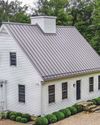
AN OVERVIEW OF METAL ROOFING
METAL ROOFS ARE RESURGENT, FOR GOOD REASONS.
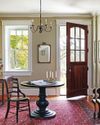
ENDURING BEAUTY IN WALLS of STONE
Now back in the family who had been here since 1830, the old farmhouse is again ready for generations to come. Additions dating to 1840 and the 1950s were preserved.

ARCHITECTURAL DETAILS COME TO LIFE
Owners and their designer celebrate the unique features of a 1912 Arts & Crafts Tudor.
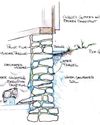
For a Wet Basement Wall
If there's problem common to old houses, it's a wet basement. I'm not talking about occasional flooding, but rather a basement that apparently seeps or leaks after even a rain shower or during snowmelt. Several approaches are available; sustainable solutions will get to the root of the problem.
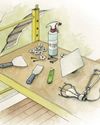
Patching a Plaster Wall
Fix a hole in the wall with a few common tools and some drywall supplies. Practice your technique!
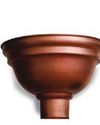
Roofing & Siding
Make note of these historical and unusual materials for the building envelope.
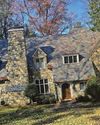
The Riddle of the water
When water incursion happens, the roof isn't necessarily the culprit. Maybe snaking a drain line, or clearing debris from a clogged gutter, temporarily will stem a leak. But a recurring problem usually means other forces are at work. It takes persistence-and a team with the right skills and patience—to identify the source and apply a solution.

Light-filled Craftsman Redo
For a dark kitchen in a 1914 Illinois house, the trick was anchoring white expanses with woodsy warmth.